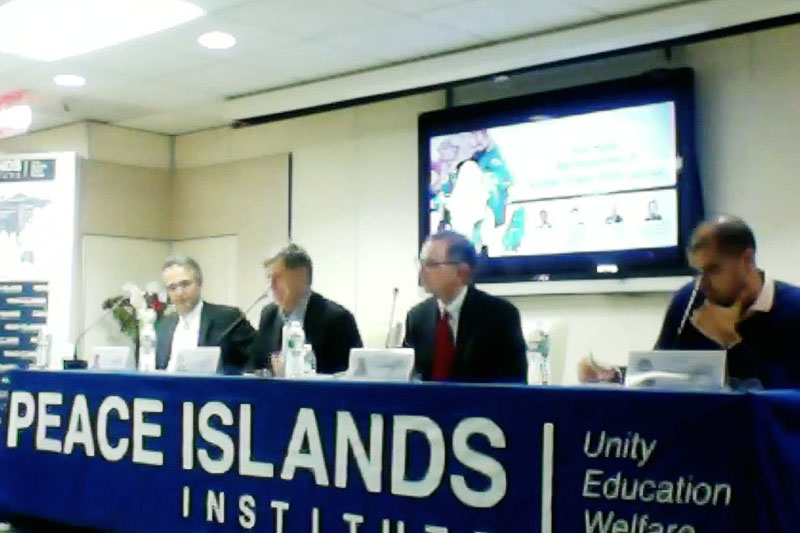Seasoned journalists from three different faith traditions recently addressed the question “How do media representations of religion shape public opinion?” during a panel discussion in New York. The journalists noted that although there have been positive representations, much of the media coverage on religion has been negative, which has in turn led to misunderstandings and sometimes hostile feelings toward religious groups.
Olivet School of Media and Communication staff listened to the Nov. 12 discussion, hosted by Peace Islands Institute, to glean information that could be relevant for future courses.
The panelists included Dr. Ari Goldman, professor of journalism at Columbia University; Dr. Paul Moses, professor of journalism at Brooklyn College and a Pulitzer Prize winner; and Haroon Moghul, senior correspondent of Religion Dispatches.
All three mentioned some of the unfortunate outcomes partly resulting from media coverage of religion. Goldman, who is Jewish and says the Torah informs what he does as a reporter, said the most alarming trend is growing global anti-Semitism and the inability to distinguish between Israel and Jews.
Moses, a Catholic, lamented that thousands of dedicated priests in the Roman Catholic Church became suspect in the public’s eyes following coverage of the sex abuse scandals. And Moghul, a Muslim, noted how Islam is largely discussed as fundamentally anti-American and violent.
Covering religion is hard, Moghul commented, while noting that the culture is becoming more secular and many journalists themselves are secular.
In the end, journalists are human beings and when it comes to a subject they’re less familiar with, it’s easy to make mistakes and it’s hard to know who to listen to, he pointed out.
“It’s hard in the time we have in the media cycle we have to add nuance in a conversation,” Moghul commented. “It’s hard to cover a religion with nuance because you don’t want to offend people. Even if you’re talking about The New York Times … you still don’t have that much room in an article to really get into a lot of the issues that are underlying a lot of the conflicts or controversy that are in the news.”
According to a 2010 survey by the Center for Marketing and Opinion Research in Akron, Ohio, half of reporters say the biggest challenge to covering religion is a lack of knowledge about the subject. Only a fifth of reporters say they are “very knowledgeable” about religion, with most being familiar with their own religious traditions.
OSMC hopes to educate its students to become Bible-based media professionals who are able to serve the public well with their reporting, especially on religion.


